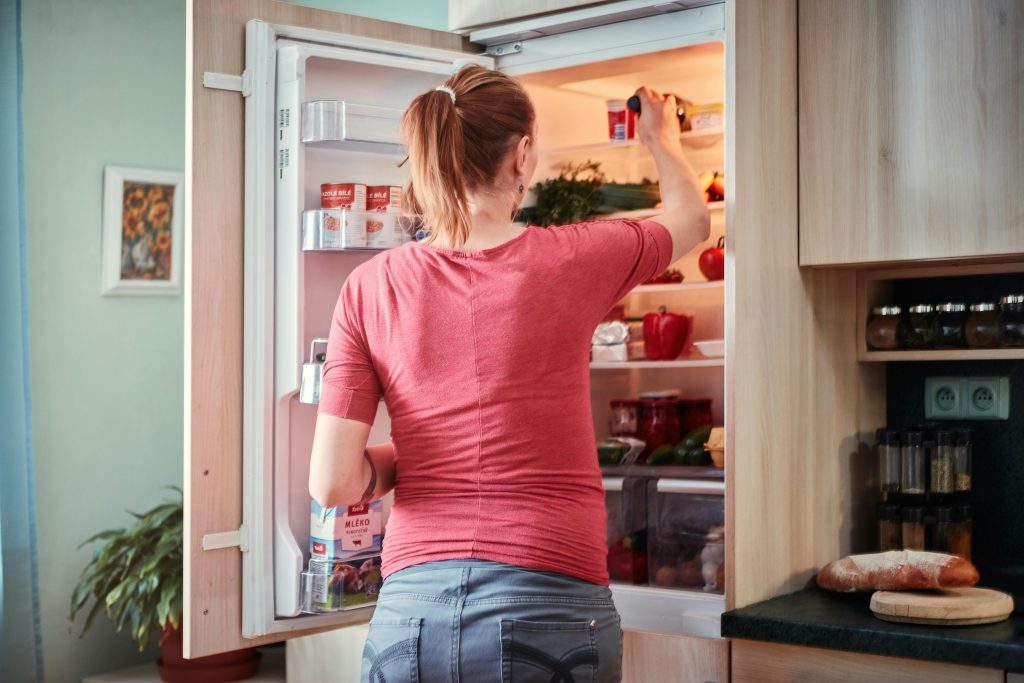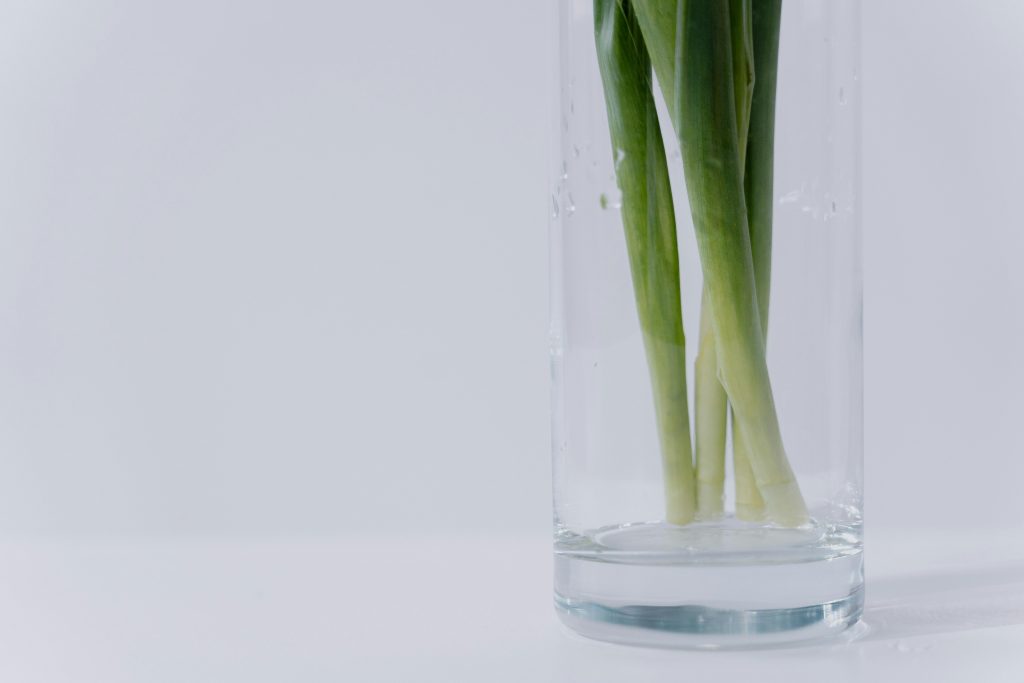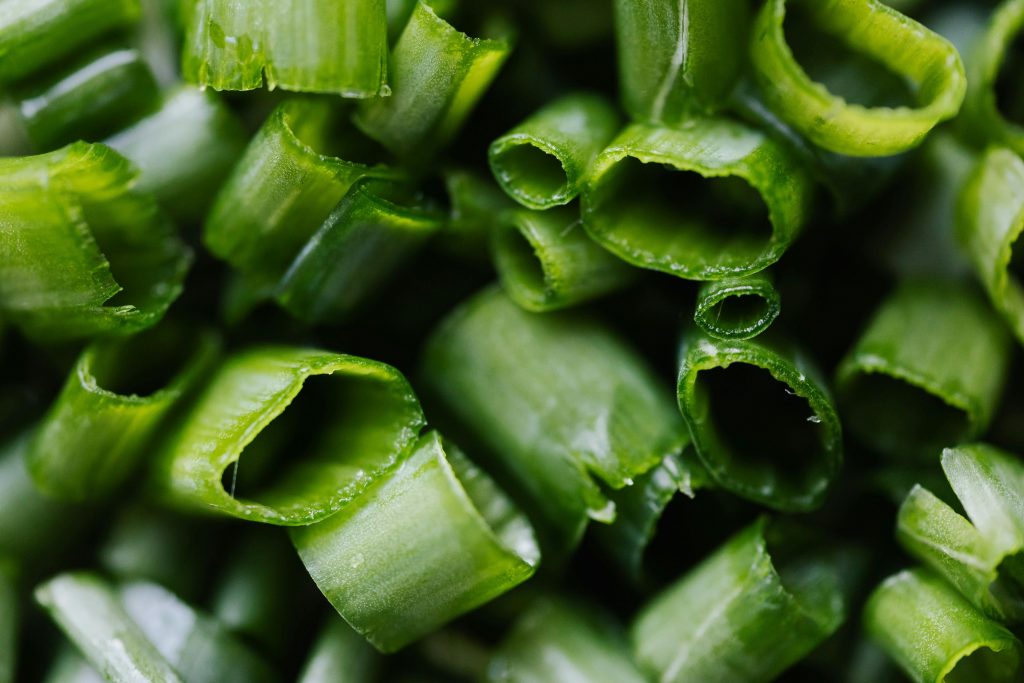Green onions, also called scallions, are a versatile and tasty ingredient in many dishes. But if you don’t store them correctly, they wilt, go slimy, or lose flavor quickly. Whether you’ve bought a big bunch from the grocery store or harvested fresh green onions from your garden, knowing how to store them properly can help you avoid waste and always have them ready when you need them.
In this guide, we’ll show you the best ways to store green onions so they stay crisp, flavorful, and safe to eat. Whether you’re keeping them in the fridge, on the counter, or in the freezer, this article will walk you through easy, effective methods to extend their life.
Why Proper Storage Matters

Green onions are more delicate than other vegetables. They have a high water content and thin leaves, which makes them spoil quickly if not kept in the right conditions. Improper storage leads to:
- Limp, wilted leaves
- Slimy or mushy bulbs
- Mold growth
- Loss of flavor and crunch
By learning proper storage methods, you can make green onions last anywhere from a few days to several weeks.
Method 1: Store Green Onions in the Fridge (Paper Towel & Bag)
Best for: Short-term storage (up to 1 week)
What You Need:
- Paper towel
- Zip-top plastic bag or container
Steps:
- Rinse the green onions and pat dry.
- Wrap them in a slightly damp paper towel.
- Place them in a zip-top bag or airtight container.
- Store in the vegetable crisper drawer of your fridge.
Why It Works:
The damp paper towel provides moisture, while the bag keeps the air out. This method helps maintain crispness and slows down spoilage.
Pro Tip: Check the towel every couple of days. If it’s too wet or dry, replace it.
Method 2: Store Green Onions in a Jar of Water
Best for: Medium-term storage (up to 2 weeks)
What You Need:
- A glass jar or cup
- Water
- Plastic bag or storage bag
Steps:
- Fill a jar with about 1 inch of water.
- Place the unwashed green onions, root end down, in the jar.
- Loosely cover the tops with a plastic bag.
- Store the jar in the fridge.
- Change the water every few days.
Why It Works:
This mimics how green onions grow naturally, keeping them fresh and hydrated. The bag keeps the tops from drying out.
Bonus: The green onions may even keep growing. Trim as needed and let them regrow.
Method 3: Regrow Green Onions on the Counter

Best for: Fresh use and long-term regrowth
What You Need:
- Small glass or jar
- Water
- Sunlight
Steps:
- Cut the green onions 2 inches above the roots.
- Place the root ends in a glass of water.
- Put the glass near a sunny window.
- Change the water every 2–3 days.
Why It Works:
The onions will start regrowing in just a few days. This method provides an ongoing supply of fresh greens.
Pro Tip: Once they regrow, trim what you need and keep reusing them.
Method 4: Freeze Green Onions
Best for: Long-term storage (up to 3 months)
What You Need:
- Freezer-safe bags or containers
- Knife and cutting board
Steps:
- Wash and pat dry the green onions.
- Chop into desired sizes (greens, whites, or both).
- Spread on a tray to flash freeze (optional).
- Place in freezer bags or containers.
- Label and store in the freezer.
Why It Works:
Freezing stops spoilage and keeps green onions ready for cooking. They won’t stay crisp when thawed, but they’re perfect for soups, stir-fries, and sauces.
Pro Tip: Don’t freeze them whole—they’re easier to use when already chopped.
Method 5: Use a Green Onion Keeper or Herb Saver
Best for: Convenience & extending shelf life (up to 2–3 weeks)
What You Need:
- A green onion keeper or herb saver (available online or in stores)
Steps:
- Rinse and dry the green onions.
- Place them inside the keeper.
- Add water to the bottom compartment if needed.
- Store in the fridge.
Why It Works:
These tools keep humidity levels just right and prevent bruising or wilting. Many models also work for other herbs like cilantro and parsley.
Common Mistakes to Avoid
Proper storage can make a big difference in how long your green onions stay fresh. However, many people unknowingly make small mistakes that lead to premature spoilage. Here are some of the most common errors and how to avoid them:
- Storing Wet Onions in Sealed Bags: After rinsing green onions, it’s tempting to toss them straight into a plastic bag. But sealing wet onions in an airtight bag traps moisture, which encourages mold and slime. Always dry them thoroughly with a paper towel before storing. If you’re using a bag, choose one with small holes or leave it slightly open for airflow.
- Exposing Onions to Direct Sunlight: If you’re storing green onions upright in a jar on the counter, keep them away from windows. Direct sunlight causes heat buildup, which speeds up spoilage and can wilt the tops. A shaded countertop works best.
- Placing Near Ethylene-Producing Fruits: Certain fruits like apples, bananas, and avocados release ethylene gas as they ripen. When stored nearby, this gas can cause green onions to age faster and spoil. Always store green onions away from these fruits, especially in the fridge or pantry.
- Forgetting to Check for Spoilage: Even with great storage methods, green onions can still go bad. Make it a habit to check your bunch every couple of days. Look for slimy layers, a sour or “off” smell, or wilted tops. Removing any spoiled parts right away can help preserve the rest of the bunch.
By avoiding these common mistakes, you’ll extend the life of your green onions and reduce waste—saving both money and your ingredients.
How to Tell If Green Onions Have Gone Bad
Even with proper storage, green onions won’t last forever. It’s important to know the signs of spoilage so you can avoid using onions that may affect the taste or safety of your food. Green onions that have gone bad are easy to spot if you know what to look for.
- Slimy or Mushy Texture: One of the first signs of spoilage is a slimy or mushy feel, especially on the white bulb end. Fresh green onions should be crisp and firm. If they feel slippery or soft to the touch, it’s time to throw them out.
- Foul or Sour Smell: Healthy green onions have a light, oniony scent. If you notice a strong, sour, or rotten odor when you open the bag or container, that’s a clear sign they’ve spoiled.
- Brown or Black Spots: Discoloration, especially dark spots on the white or green parts, can indicate mold or rot. These should not be trimmed and used—it’s safer to discard the entire bunch.
- Completely Limp Leaves: While slightly wilted tops are normal over time, fully limp, shriveled, or yellowing leaves mean the green onions are no longer fresh.
Always trust your senses—when in doubt, toss them out.
Extra Tips for Green Onion Lovers
If you’re a fan of green onions, there are a few extra tricks that can help you get the most out of every bunch. These small changes in how you shop, cook, and store green onions can make a big difference in reducing waste and maximizing flavor.
- Buy Only What You Need: Green onions don’t last as long as regular onions, so it’s a good idea to buy them in small amounts. If you’re cooking for one or two people, a single bunch may be enough for several meals. Buying too much at once often leads to waste.
- Use the Entire Plant: Don’t toss the white ends! Both the white and green parts of the onion are edible and flavorful. The white portion has a stronger, more onion-like flavor and is great for sautés and stir-fries. The green tops add a fresh finish to soups, salads, and baked potatoes.
- Add Them at the End of Cooking: To preserve their mild flavor and bright color, add green onions toward the end of the cooking process. Overcooking can cause them to lose their crispness and become bitter.
- Make Your Own Green Onion Flakes: Got extras? Slice them thinly and dry them in a low oven (around 150°F) or a food dehydrator until crisp. Store the dried flakes in a sealed jar and sprinkle them over dishes for a burst of onion flavor anytime.
By following these tips, you can enjoy green onions at their best, cut down on food waste, and even create a simple pantry staple from leftovers. Whether you cook often or just use them as a garnish, these small habits go a long way.
Green Onion Storage FAQs
Can I store green onions in aluminum foil?
Not recommended. Foil traps too much moisture and may cause spoilage faster than other methods.
Should I wash green onions before storing?
Only wash them if you plan to use them within a few days. Otherwise, it’s better to wash right before use to avoid extra moisture.
Do green onions go bad faster than regular onions?
Yes. Because of their high water content and soft texture, green onions spoil more quickly.
What if my green onions came without roots?
You can still store them in the fridge or freezer, but you won’t be able to regrow them.
How long do green onions last in the fridge?
Depending on the method, 5–14 days.
Comparison: Green Onions vs. Regular Onions
- Shelf Life:
- Green Onions: Typically last 1–2 weeks when stored properly. They are more delicate and have a higher water content, which makes them spoil faster.
- Regular Onions: Can last for several weeks to a few months, depending on the variety and storage conditions. They are heartier and store well in dry, cool environments.
- Green Onions: Typically last 1–2 weeks when stored properly. They are more delicate and have a higher water content, which makes them spoil faster.
- Storage Methods:
- Green Onions: Can be stored in the fridge (wrapped in a paper towel and placed in a plastic bag), kept upright in a jar of water on the counter (change the water every couple of days), or frozen for long-term use.
- Regular Onions: Best stored in a pantry or cupboard in a mesh bag, basket, or other container with good air circulation. Avoid storing them near potatoes, as this can speed up spoilage.
- Green Onions: Can be stored in the fridge (wrapped in a paper towel and placed in a plastic bag), kept upright in a jar of water on the counter (change the water every couple of days), or frozen for long-term use.
- Flavor:
- Green Onions: Have a mild, fresh taste and are often used raw or lightly cooked.
- Regular Onions: Offer a strong, pungent flavor and are commonly sautéed, roasted, or caramelized.
- Green Onions: Have a mild, fresh taste and are often used raw or lightly cooked.
- Used In:
- Green Onions: Ideal for garnishing, soups, salads, stir-fries, and fresh dishes.
- Regular Onions: Great for heartier recipes like stews, sauces, casseroles, and slow-cooked meals.
- Green Onions: Ideal for garnishing, soups, salads, stir-fries, and fresh dishes.
Final Thoughts
Green onions are a delicious addition to many meals—but they’re quick to spoil if not stored correctly. Whether you prefer keeping them in the fridge, regrowing them on the counter, or freezing them for later use, following the right method will save money, reduce food waste, and keep your dishes tasting fresh.
If you’re a fan of green onions, it’s worth trying different storage options to see what works best for your kitchen and lifestyle. With just a little care, you can make your green onions last much longer and always have them on hand when you need that perfect finishing touch!

